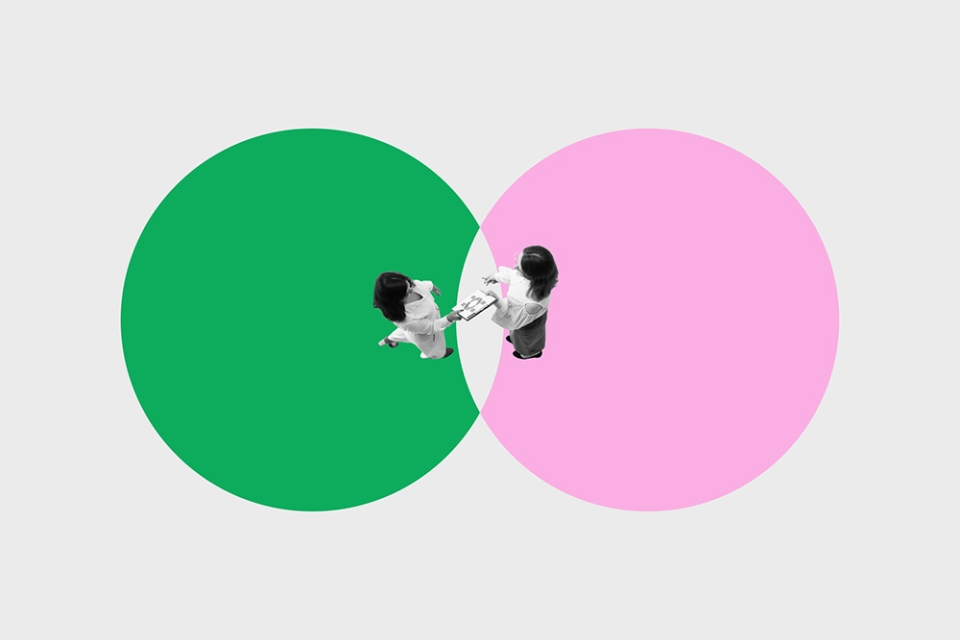ZOE, the medical research team that did so much to help model the spread of Covid-19 until the UK government cut its funding for fear that it might tell them things they didn’t want to hear, continues to make wise observations on health-related behaviour. One of them is about new year’s resolutions. The advice is: don’t make them. Or, to be more precise, don’t set 1st January as a big-bang start date (the house is usually full of half-finished alcoholic, sugary, and carb-filled treats that can’t reasonably be left to moulder) and don’t set expectations that too many behaviours can undergo a sudden and radical change all at once.
The realisation that a behaviour needs to change, and recognising the benefits of doing so, can arrive as a blinding revelation. Doing something about it takes more thought, more process, more practice: more time.
When somebody gets up for work on the first working day of 2023 (which will certainly be the first day of the business quarter and in many cases of the financial year) they face a daunting horizon. If what they have to do involves persuasion, negotiation or selling, then the organisation they work for will almost certainly expect them to do those things better, faster and more effectively than they did in 2022. Management eyes will be on them, and the looming prospect of stagflation in most major economies will be gnawing at their confidence.
So, don’t make it all about the first day, or even an attempt to turn everything around in the first month. Dry January is fine, but not if it’s followed by Binge February. Habits have to be learned, then embedded, then absorbed. Only then will changed behaviour mean changed results.
So that persuader, negotiator or seller should take a moment to look around and think: “What is this year going to need me to do differently if I’m going to confront a more sceptical, cash-strapped, rationalisation- obsessed customer or supplier community than I’m used to? What steps can I take that will effect a lasting change, not an illusory, transitory hit?”. And they should have realistic expectations of what they can change, and how fast.
It begins in developing the skills to build value. Why should the other person do a thing, just because I know it makes logical sense for them to do so and would be to my advantage if they did? If your customers are short of budget, or your vendors are experiencing glitches in their supply chain, how can you influence them to favour you with their scarcity rather than somebody else?
The answer is that you seek to understand them by asking them questions about what matters to them, what would help them, what solutions you might have that will address – in ways you can mutually quantify – the specific difficulties they face. You don’t assume value by arriving at a conversation with a preconceived notion of what is good for them (however much desk research you might have done); you build value brick-by-brick through an interaction in which they are an equal (nay, a senior) partner. And if you’ve never done it that way before, you’re not going to have completed the total behaviour change by the end of January.
So (channelling ZOE’s advice again) agree a limited set of behavioural goals for yourself to achieve by the end of Q1, get the right expert help in moving towards them, and don’t wring your hands at all the other things you haven’t yet been able to change….yet.
In time, with the right model, support, knowledge, skills practice, coaching and action plan, you’ll become conscious of that fundamental shift in interactive behaviour starting to take effect, and then you won’t even be conscious of it. It’ll just be there.
The next thing you’ll be able to build on top of that (as the year moves on and the days grow a little longer) is applying those skills more widely. That ability to build value consultatively will impact not just one-to-one conversations, but entire multi-level, complex, long-term relationships. If you’re trying to move strategic opportunities forward (let’s dwell on sales examples for a moment, but they could equally be in category sourcing negotiations or internal project management) you’ll need to replicate those behavioural changes across many conversations, often with senior, unfamiliar and scary people in charge of making decisions. For you, those decisions are laden with potential; for them, they are laden with risk. You’ll have to understand those feelings of risk and concern – as well as leveraging the supportive positive relationships that you’ve already worked hard to foster – to plan, manage and document a holistic approach.
In a while, you’ll be adept at building those relationships and learning from your increasingly subtle and detailed exposure and analysis of customers’ long term aims, nagging concerns, supplier preferences and short-term needs. Now, if you’re alert and thorough, you’ll be in a better position to crystalise that learning. One benign consequence of that clarity will be value propositions that align what your customers need with what you can offer; and align what Sales are saying they can offer to a customer with what Marketing are saying your company can offer the wider world.
That will all, in turn, help you to make proposals and presentations tighter and precision-targeted on achieving the outcomes that a customer or a set of customers place high value upon. No more woolly language or boiler-plate paragraphs that look identical from prospect to prospect. No more crowded slides with “feature dump” lists of everything you can provide for everyone. Instead – clarity, simplicity, ease of communication, relevance to needs you’ve understood at the atomic level, evidence of your immersion in their world, building blocks of lasting relationships.
January might be a good time to begin all this. But so might February, or July or next year. These behaviour changes generally need preceding by another enabling behaviour change: the commitment to give people the skills they need and to argue persuasively for the time (and, yes, budget) to scope, learn, install and embed them as an unshakeable priority. ZOE recommends identifying which behaviours need to change as a starting point to improving outcomes. How persuasively you can argue the case for any of this now might give you a clue.



.png?width=675&name=MicrosoftTeams-image%20(22).png)




.webp)